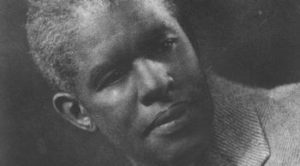
Prentice Polk
*Prentice Polk was born on this date in 1898. He was a Black photographer and professor known for his portraits of African Americans.
Prentice Herman Polk was born in Bessemer, Alabama, the fourth child of Jacob Prentice Polk and Christine Romelia Ward. Originally named Herman Polk, he adopted his father's name after his death and became known as P. H. In 1916, he enrolled at the Tuskegee Institute to become a painter. His plans changed when he heard photographer C. M. Battey, who headed Tuskegee's Photography Department, talk about the field's potential and encourage interested students to come to see him.
After speaking with Battey, Polk studied photography with him by correspondence. In 1924, Polk moved to Chicago, Illinois, where he furthered his studies with a white photographer, Fred A. Jensen. Polk married Margaret Blanche Thompson in Chicago in 1926; they had a son. Polk returned to Tuskegee in 1927 to open his studio near his hometown. His mentor, Battey, died that same year, and Polk joined the school's faculty the following year. In 1933, he became head of the Photography Department, remaining in that capacity until 1938.
He left for a year in an attempt to open a branch of his photography studio in Atlanta, GA, before returning to Tuskegee to serve as the college's official photographer for four decades. Photographed in black and white, Polk's subjects ranged from famous Blacks such as George Washington Carver to working-class and poor Alabamians. He documented famous visitors such as Paul Robeson and Langston Hughes and campus events such as the American Civil Rights Movement. At the same time, he continued to run his studio in town.
One series, "Old Characters," focused on documenting ex-slaves from Macon County. Like Battey, Polk strove to portray his sitters with dignity and sensitivity. Unlike Battey, who preferred soft-focus shots and idealized poses, Polk developed a style in which sharp details and strong lighting showcased his subjects' individuality.
His approach is evident in a comment about a 1932 photograph from the "Old Characters" series entitled The Boss: "Portrayed in her own matter-of-factness: confident, hardworking, adventuresome, assertive and stern. The pose, at an angle, and her expression, authoritative and firm, are not the result of my usual tactics to encourage a response. She wears her own clothes. She is not cloaked in victimization. She is not pitiful; therefore, she is not portrayed in pitiful surroundings. She is not helpless, and she is not cute." In his early work, Polk used a Kodak box camera with a Graphex lens. Critics have commented on his technical mastery of the medium despite not always having the best equipment.
One of Polk's most influential images was a 1941 photograph of First Lady Eleanor Roosevelt in a plane with pilot Charles Anderson, who was the Tuskegee Institute's chief flight instructor. The picture was used to promote the newly established Tuskegee Airmen's "experiment" that would ultimately train some 450 black pilots for deployment in World War II as the Tuskegee Airmen. Polk's photographs have been exhibited at the Corcoran Gallery (Washington, DC), the Museum of Natural History (New York, NY), the Studio Museum in Harlem (NY), and a range of galleries and other institutions. In 1980, he was awarded the Black Photographer’s Annual Testimonial Award, and the following year, he won a National Endowment for the Arts fellowship. Prentice Polk died on December 29, 1984.